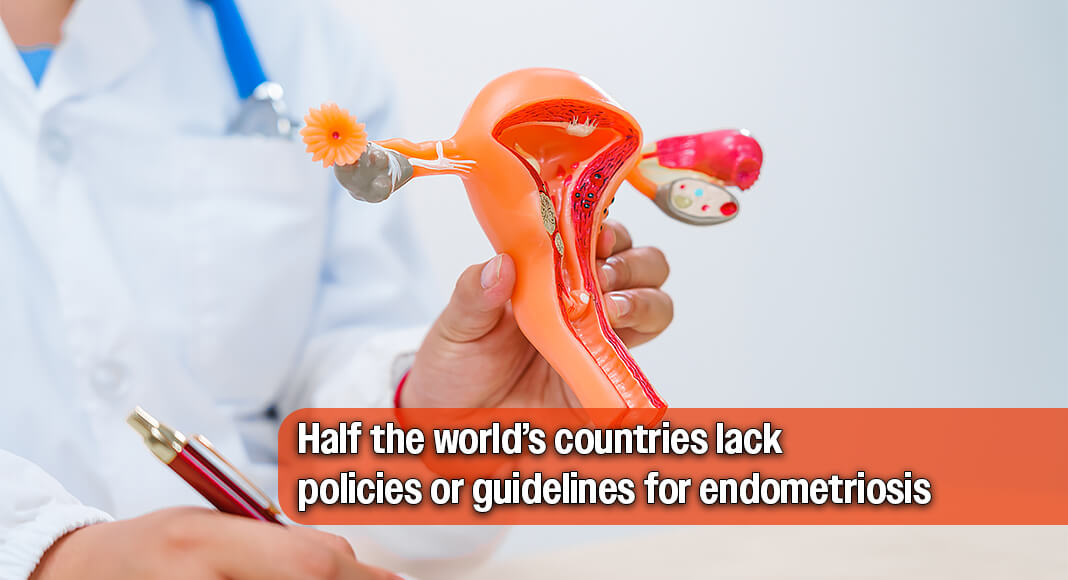
Mega Doctor News
By Michigan Medicine – University of Michigan
Newswise – Endometriosis is estimated to affect one in 10 reproductive-aged women worldwide – but research reveals stark global inequities in how the chronic condition is recognized, treated and prioritized in national health systems.
Across the 194 World Health Organization member states, nearly half of all countries have no national policies or clinical guidance on diagnosis or care, according to two landmark reviews published in The Lancet Obstetrics, Gynaecology & Women’s Health.
The first study reveals striking disparities in the availability of region-specific endometriosis care guidance and treatment around the world, with more than a quarter of countries lacking any publicly available clinical recommendations.
“Our findings show that many people living with this chronic condition are navigating care in regions where no official recommendations exist,” said first author Devon Evans, M.D., M.P.H., assistant professor at the University of Manitoba.
Endometriosis affects an estimated 190 million people worldwide and occurs when abnormal tissue grows outside the uterus. Symptoms can range from pain and heavy periods to infertility.
Only 7% of countries have official government-endorsed clinical care guidelines, the research finds.
For many countries, the only regional endometriosis care guidance identified was from informal sources, such as advocacy websites or social media, contributing to wide inconsistencies in care.
Researchers found that while Europe had the greatest availability of guidelines, many low- and middle-income countries had little or no formal guidance for providers or patients.
“Access to evidence-based, culturally relevant and locally actionable care guidance is critical for improving outcomes in endometriosis,” said senior author Stacey Missmer, Sc.D., associate chair for research of obstetrics and gynecology at the University of Michigan Medical School.
“Local review and modification of existing care guidelines from countries with comparable populations or health system structures could rapidly drive awareness and implementation of effective endometriosis-focused care worldwide,” added co-senior author Linda Giudice, M.D., Ph.D., distinguished professor of OB/GYN reproductive sciences at the University of California, San Francisco and past president of the International Federation of Fertility Societies.
A call for region-specific care standards
The second study found that half of all countries had no policy information available at all.
However, 96 countries were raising awareness of endometriosis as a national problem, 48 countries had gone further to place endometriosis on the political agenda and 12 countries had adopted policies for a national endometriosis strategy.
Although endometriosis policy frameworks remain scarce worldwide, the review highlights promising examples — most notably the national action plans of Australia and France, which are currently being implemented and evaluated.
“Despite increasing awareness of endometriosis, addressing the challenges faced by those living with the condition requires coordinated national strategies developed in collaboration with policymakers, advocates and patients themselves, to reduce its global burden,” said first author Tatjana Gibbons of the University of Oxford.
“While the substantial personal and socioeconomic impact of endometriosis is clear, there are huge disparities in the availability of policies that help the care of people with the condition across the world,” added senior author Krina Zondervan, head of the Nuffield Department of Women’s and Reproductive Health at the University of Oxford and co-director of the Oxford Endometriosis CaRe Centre.
The authors call for governments, medical societies and patient advocacy groups to collaborate in creating, maintaining and promoting clear, region-specific endometriosis care standards.
These efforts, they say, are essential to reduce diagnostic delays, improve quality of life and ensure equitable access to treatment across the globe.
“The lack of health care policies means that patients and clinicians have no foundational resources or requirements upon which to rely – potentially amplifying socioeconomic, geographical and clinical barriers to accessing needed endometriosis services,” said David Adamson, co-senior author and president of the International Committee for Monitoring Assisted Reproductive Technologies.
An accompanying editorial in The Lancet calls this the moment to move “from awareness to action,” urging governments to treat endometriosis as a chronic disease that demands coordinated national response.In a second accompanying editorial, the WHO states it recognizes the impact of endometriosis on physical, mental, and socioeconomic wellbeing, and that there is a need to show that the presence of policies and guidelines translates into substantive impacts that improve the lives of millions of people with endometrios










